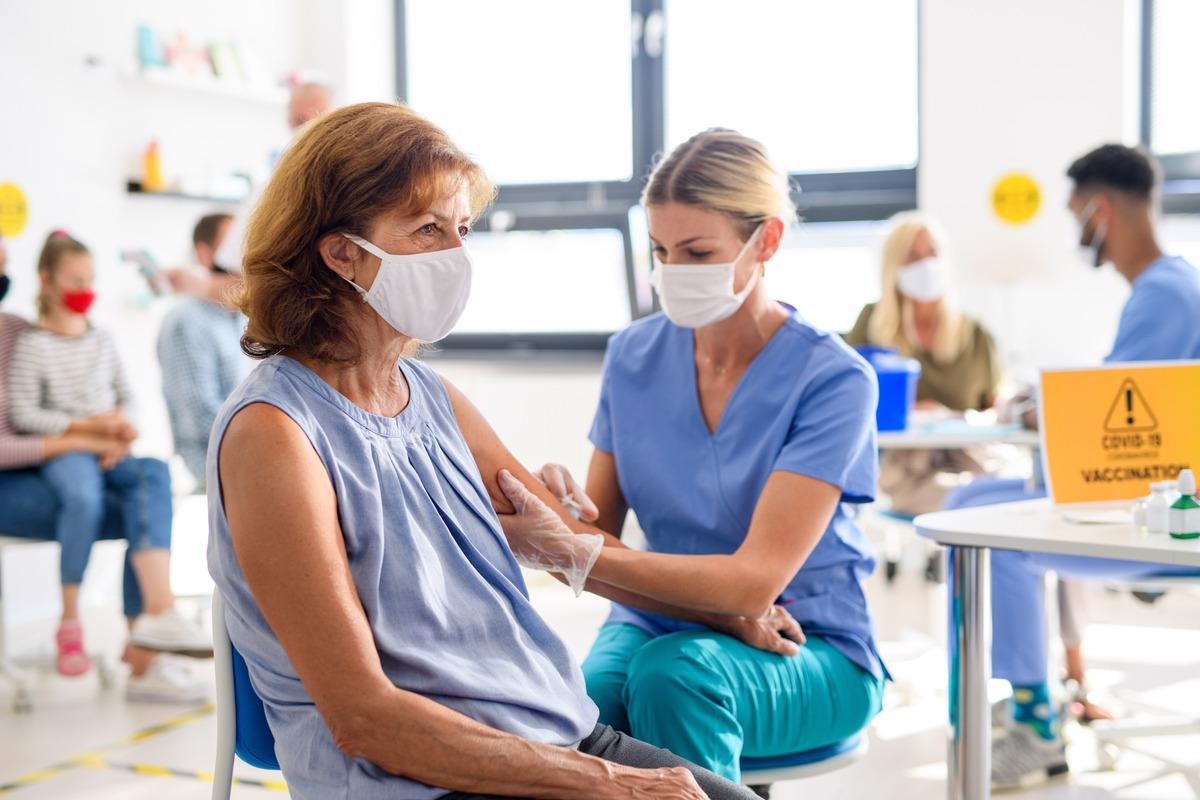In a recent study published in the Cell, researchers evaluated host immune responses to four coronavirus disease 2019 (COVID-19) vaccines representing three different vaccine technology platforms, focusing on immune memory responses.
 Study: Humoral and cellular immune memory to four COVID-19 vaccines. Image Credit: Halfpoint/Shutterstock
Study: Humoral and cellular immune memory to four COVID-19 vaccines. Image Credit: Halfpoint/Shutterstock
The researchers analyzed T cell, B cell, and antibody responses to messenger ribonucleic acid (mRNA)-based vaccines, mRNA-1273, BNT162b2. Likewise, they analyzed immune responses to the recombinant protein-based adjuvanted vaccine NVX-CoV2373 and viral vector-based Ad26.COV2.S vaccine.
Background
Several preclinical trials have demonstrated that severe acute respiratory syndrome coronavirus 2 (SARS-CoV-2) vaccines are remarkably effective in preventing progression to severe disease due to their high vaccine efficacy (VE). Similarly, population-based studies conducted in real-world settings have shown that these vaccines have a distinct immunological mechanism of action. Therefore, the VEs of different COVID-19 vaccines for hospitalization and infection vary, with a more stable VE against hospitalization over time than infection.
Studies have also established antibodies as a strong correlate of protective immunity over the first few months post-vaccination. While antibodies prevent SAR-CoV-2 infection, cellular immunity modulates disease severity to resolve the infection. Together, these findings indicate that different COVID-19 vaccines might be inducing differential immune memory.
There is limited availability of standardized cellular assays for comparisons of immunogenicity of COVID-19 vaccines. More importantly, there is a lack of longitudinal studies directly evaluating the kinetics of vaccine-specific immune memory in humans using cryopreserved peripheral blood mononuclear cells (PBMCs).
About the study
In the present study, researchers recruited and divided all the study participants into four groups, with individuals in each group receiving a different platform-based COVID-19 vaccine. The study participants had similar gender, age, and races/ethnicity. They collected blood samples of all the participants at different time points and preserved their plasma and PBMCs.
The team measured immunoglobulin G (IgG) levels against SARS-CoV-2 nucleocapsid (N) protein. Additionally, they performed binding antibody and pseudovirus (pSV) neutralization assays on all the test samples and measured spike (S), receptor-binding domain (RBD)-specific IgGs, and anti-N antibodies.
Finally, the researchers used correlation matrixes and principal component analysis (PCA) to perform multiparametric analysis across all four vaccine platforms. In this way, they evaluated the relative immunogenicity of each COVID-19 vaccine; likewise, they tested the relationship between vaccine-induced early immune responses and immune memory.
Study findings
The researchers performed 1408 measurements on 352 samples to quantify binding antibody and pSV neutralization titers. 100% of mRNA-1273 recipients exhibited high S and RBD-specific IgG levels and neutralizing antibodies (nAbs) at six-months post-vaccination.
For the entire six months post-vaccination, nAb titers trended lower in BNT162b2 recipients than in the mRNA-1273 recipients. During the same time, the Ad26.COV2.S vaccine induced significantly lower nAb titers and S and RBD IgGs than mRNA vaccine recipients, while the NVX-CoV2373 recipients had nAb titers comparable to both mRNA vaccinees.
All four different COVID-19 vaccines induced different qualities and quantities of the cluster of differentiation (CD)4+ T cell, CD8+ T cell, and antibody responses. All m-RNA-based vaccines induced the formation of SARS-CoV-2 S-specific memory CD4+ T cells and similar frequencies of S-specific memory CD8+ T cells, with circulating T follicular helper (cTfh) cells and CD4-cytotoxic T cells (CTL) populations highly represented after vaccination with the mRNA and NVX-CoV2373 vaccines. Notably, CD8+ T cell frequencies were only detectable in 60-67% of test subjects at six months. Although antibodies elicited in response to mRNA vaccines waned post six months; however, memory T and B cell populations remained comparatively stable.
The researchers used S and RDB probes to identify, quantify and phenotypically characterize memory B cells from vaccinated subjects at 3.5 and 6 months post-vaccination. The kinetics of memory B cell responses to the four vaccines varied, with an observed increase in S-specific memory B cells over time. The fold-increases in the RBD-specific memory B cell frequencies six months after mRNA-1273, BNT162b2, Ad26.COV2.S and NVX-CoV2373 were 1.7, 2.2, 2.1, and 3.05, respectively.
PCA mapping indicated two distinct immunological profiles for mRNA-1273 and Ad26.COV2.S vaccines, based on 3.5 and 6-month post-vaccination data. Accordingly, the distinguishing feature of the Ad26.COV2.S vaccine was that it increased the frequency of S-specific chemokine receptor 3 (CXCR3)+ memory B cells just as natural infection-induced immunity; however, mRNA vaccines did not. The immunological profiles of both the mRNA vaccines closely resembled, but the profile of BNT162b2 was more heterogeneous.
Conclusions
The present study established the magnitude and duration of vaccine-induced immune memory across four vaccine platforms via a comprehensive evaluation of effector and memory immune responses.
Across all the antigen-specific immune metrics assessed, mRNA vaccines were consistently the most immunogenic. Contrastingly, the immune responses induced by Ad26.COV2.S were relatively lower but more stable, and that of NVX-CoV2373 was comparable to mRNA vaccines. The current study data coupled with VE data for various other vaccine platforms could be relevant for other vaccine efforts.